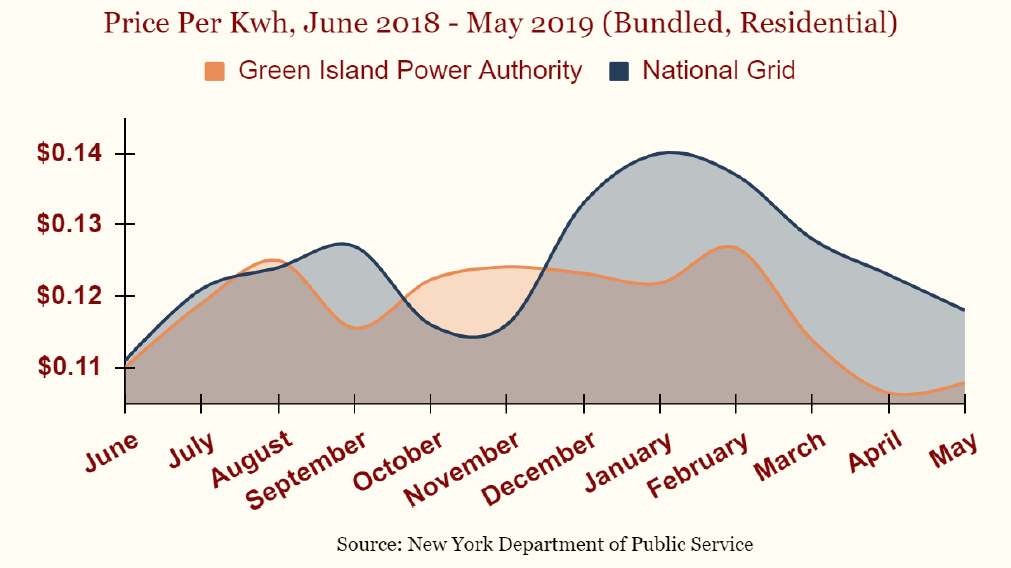Build Public Renewables Act
(S.4134 Parker/A.279 Carroll)
Purpose: This legislation gives the New York Power Authority (NYPA) the power to finance, build, and maintain new renewable energy projects. In accordance with the Climate Leadership and Community Protection Act, the bill also directs NYPA to phase out all non-renewable energy generation. Finally, this legislation directs NYPA to work with community groups to develop a democratization plan.
Background: In a market economy, consumers express preferences through voluntary transactions. This ritual is interrupted when a service is needed too urgently to “shop around” (such as emergency medical care) or when there are no other regional providers (such as railways). Because it is logistically infeasible to build competing infrastructure, utilities are natural monopolies that typically satisfy both those conditions. New York State acknowledged this was the case many decades ago when Niagara Hudson Power Corporation’s uncompetitive practices were remedied by forcing it to forfeit some territories where they were the sole provider, not by diversifying the market within those territories.
By default, most residents of the Capital Region pay National Grid for our energy. Because it is basically inevitable that our homes will need energy and that they will be the ones providing it, what they describe as “bills” actually closely resemble “taxes.” The key distinction is that, unlike ordinary taxes, those funds are collected by a private, for-profit entity, and we do not decide how they are used. Given a real choice in the matter, many of us in the Capital District would quite likely instead purchase our energy from the Green Island Power Authority (GIPA), a public-benefit corporation providing the same services at reliably lower costs using only renewable energy.
Like our local GIPA, NYPA is a public-benefit corporation supplying New Yorkers with affordable, renewable energy. Founded by Governor Roosevelt in 1931, NYPA today is the country’s largest state public utility. It generates nearly 25% of our state’s power, about 80% of which is derived from renewable hydropower.
Unfortunately, NYPA’s horizons have been artificially narrowed by the state because it cannot currently build or maintain new renewable energy generation facilities. When we cannot build enough new facilities, our emphasis turns to limiting our consumption while we hope that private industry behaves well. That solution is neither confident nor sustainable. Fortunately, public-benefit corporations and state-owned enterprises across North America demonstrate the efficacy of public power alternatives.
Justification: TIMBER advocates for enhanced citizen involvement in the parts of democracy that happen between elections. Since we don’t have a choice in what energy system we hook up to, what we use to generate electricity and how much we decide to charge for it are questions that should be answered by New Yorkers – not private shareholders.
The CLCPA’s goals are both ambitious and critical. By lifting the cap on NYPA’s potential and restructuring its governance and accountability, this bill arms New York with a tool to make them possible and empowers the public to wield it. The enactment of the Build Public Renewables Act is not a silver bullet on its own, but it does empower us all to stop hoping and start acting.
TIMBER nurtures daily democracy in the Capital Region by advocating for reforms to make our civic infrastructure more resilient, effective, and accountable. We fully support this legislation.


